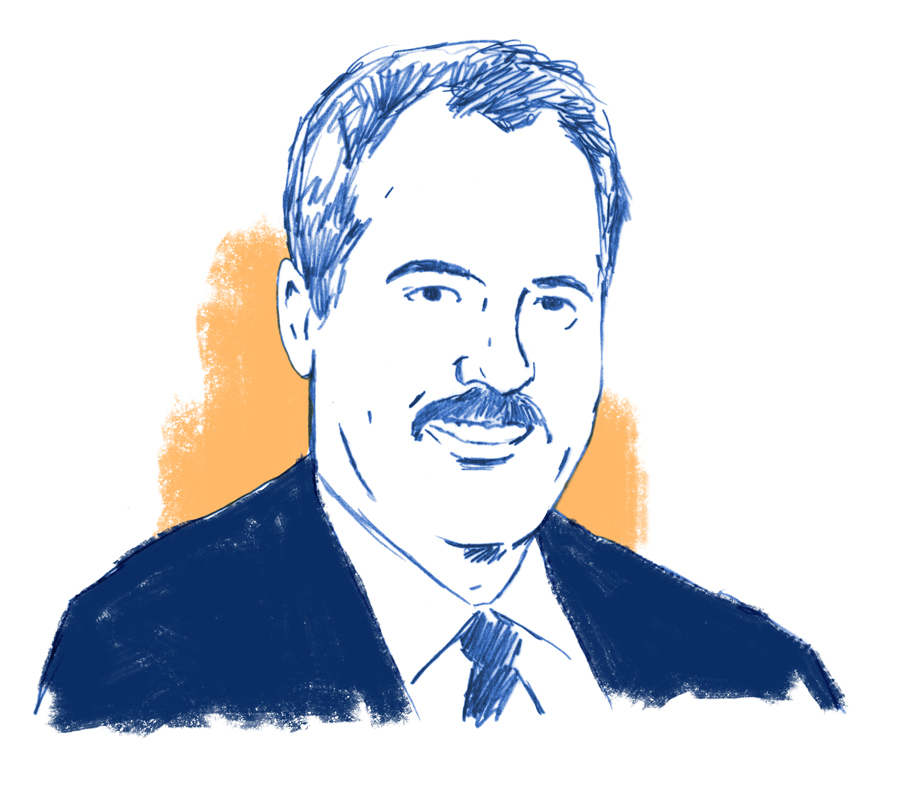AIG Tells How It Raised Its Level of Operations Excellence
By Kevin Heslin and Lee Kirby
Driving operational excellence across multiple data centers is exponentially more difficult than managing just one. Technical complexity multiplies as you move to different sites, regions, and countries where codes, cultures, climates, and other factors are different. Organizational complexity further complicates matters when the data centers in your portfolio have different business requirements.
With little difficulty, an organization can focus on staffing, maintenance planning and execution, training and operations for a single site. Managing a portfolio turns the focus from projects to programs and from activity to outcomes. Processes become increasingly complex and critical. In this series of interviews, you will hear from practitioners about the challenges and lessons they have drawn from their experiences. You will find that those who thrive in this role share the understanding that Operational Excellence is not an end state, but a state of mind.
This interview is part of a series of conversations with executives who are managing diverse data center portfolios. The interviewees in this series participated in a panel at Uptime Institute Symposium 2015, discussing their use of the Uptime Institute Management & Operations (M&O) Stamp of Approval to drive standardization across data center operations.
Herb Alvarez: Director of Global Engineering and Critical Facilities
American International Group
An experienced staff was empowered to improve infrastructure, staffing, processes, and programs
What’s the greatest challenge managing your current footprint?
Providing global support and oversight via a thin staffing model can be difficult, but due to the organizational structure and the relationship with our global FM alliance partner (CBRE) we have been able to improve service delivery, manage cost, and enhance reliability. From my perspective, the greatest challenges have been managing the cultural differences of the various regions, followed by the limited availability of qualified staffing in some of the regions. With our global FM partner, we can provide qualified coverage for approximately 90% of our portfolio; the remaining 10% is where we see some of these challenges.
Do you have reliability or energy benchmarks?
We continue to make energy efficiency and sustainability a core requirement of our data center management practice. Over the last few years we retrofitted two existing data center pods at our two global data centers and we replaced EOL (end of life) equipment with best-in-class, higher efficiency systems. The UPS systems that we installed achieve a 98% efficiency rating while operating in ESS mode and 94 to 96% rating while operating in VMMS mode. In addition, the new cooling systems were installed with variable flow controls and VFDs for the chillers, pumps, and CRAHs. Including full cold aisle containment as well as multiple control algorithms to enhance operating efficiency. Our target operating model for the new data center pods was to achieve a Tier III level of reliability along with a 1.75 PUE, and we achieved both of these objectives. The next step on our energy and sustainability path is to seek Energy Star and other industry recognitions.
Can you tell me about your governance model and how that works?
My group in North America is responsible for the strategic direction and the overall management for the critical environments around the world. We set the standards (design, construction, operations, etc.), guidelines, and processes. Our regional engineering managers, in turn, carry these, out at the regional level. At the country level, we have the tactical management (FM) that ultimately implements the strategy. We subscribe to a system of checks and balances, and we have incorporated global and regional auditing to ensure that we have consistency throughout the execution phase. We also incorporate KPIs to promote the high level of service delivery that we expect.
From your perspective, what is the greatest difficulty in making that model work, ensuring that the design ideas are appropriate for each facility, and that they are executed according to your standards?
The greatest difficulties encountered were attributed to the cultural differences between regions. Initially, we encountered some resistance at the international level in regards to broad acceptance of design standards and operating standards. However, with the support of executive senior leadership and the on-going consolidation effort, we achieved global acceptance through a persistent and focused effort. We now have the visibility and oversight to ensure that our standards and guidelines are being enforced across the regions. It is important to mention that our standards, although rigid, do have flexible components embedded in them due to the fact that a “one size fits all” regimen is not always feasible. For these instances, we incorporated an exception process that grants the required flexibility to deviate from a documented standard. In terms of execution, we now have the ability via “in-country” resources to validate designs and their execution.
It also requires changing the culture, even within our own corporate group. For example, we have a Transactions group that starts the search for facilities. Our group said that we should only be in this certain type of building, this quality of building, so we created some standards and minimum requirements. We said, “We are AIG. We are an insurance company. We can’t go into a shop house.” This was a cultural change, because Transactions always looked for the lowest cost option first.
The AIG name is at stake. Anything we do that is deficient has the potential to blemish the brand.
Herb, it sounds like you are describing a pretty successful program. And yet, I am wondering if there are things that you would do differently if you starting from scratch.
If it were a clean slate, and a completely new start, I would look to use an M&O type of assessment at the onset of any new initiatives as it relates to data center space acquisition. Utilizing M&O as a widely accepted and recognized tool would help us achieve consistency across data centers and would validate colo provider capabilities as it relates to their operational practices.
How do M&O stamps help the organization, and which parts of your operations do they influence the most?
I see two clear benefits. From the management and operations perspective, the M&O Stamp offers us a proven methodology of assessing our M&O practice, not only validating our program but also offering a level of benchmarking against other participants of the assessments. The other key benefit is that the M&O stamp helps us promote our capabilities within the AIG organization. Often, we believe that we are operationally on par with the industry, but a third-party validation from a globally accepted and recognized organization helps further validate our beliefs and our posture as it relates to the quality of the service delivery that we provide. We look at the M&O stamp as an on-going certification process that ensures that we continually uphold the underlying principles of management and operations excellence, a badge of honor if you will.
AIG has been awarded two M&O Stamps of Approval in the U.S. I know you had similar scores on the two facilities. Were the recommendations similar?
I expected more commonality between both of the facilities. When you have a global partner, you expect consistency across sites. In these cases, there were about five recommendations for each site; two of them were common to both sites. The others were not. It highlighted the need for us to re-assess the operation in several areas, and remediate where necessary.
Of course you have way more than two facilities. Were you able to look at those reports and those recommendations and apply them universally?
Oh, absolutely. If there was a recommendation specific to one site, we did not look at it just for that site. We looked to leverage that across the portfolio. It only makes sense, as it applies to our core operating principals of standardizing across the portfolio.
Is setting KPIs for operations performance part of your FM vendor management strategy?
KPIs are very important to the way we operate. They allow us to set clear and measureable performance indicators that we utilize to gauge our performance. The KPIs drive our requirement for continuous improvement and development. We incentivize our alliance partner and its employees based on KPI performance, which helps drive operational excellence.
Who do you share the information with and who holds you accountable for improvements in your KPIs?
That’s an interesting question. This information is shared with our senior management as it forms our year-over-year objectives and is used as a basis for our own performance reviews and incentive packages. We review our KPIs on an on-going basis to ensure that we are trending positively; we re-assess the KPIs on an annual basis to ensure that they remain relevant to the desired corporate objectives. During the last several years one of our primary KPIs has been to drive cost reductions to the tune of 5% reductions across the portfolio.
Does implementing those reductions become part of staff appraisals?
For my direct reports, the answer is yes. It becomes part of their annual objectives, they have to be measurable and we have to agree that they are achievable. We track progress on a regular basis and communicate progress via our quarterly employee reviews. Again, we are very careful that any such reductions do not adversely impact our operations or detract us from achieving our uptime requirements.
Do you feel that AIG has mastered demand management so you can effectively plan, deploy, and manage capacity at the speed of the client?
I think that we have made significant improvements over the last few years in terms of capacity planning, but I do believe that this is an area where we can still continue to improve. Our capacity planning team does a very good job of tracking, trending, and projecting workloads. But there is ample opportunity for us to become more granular on the projections side of the reporting, so that we have a very clear and transparent view of what is planned, its anticipated arrival, and its anticipated deployment time line. We recognize that we all play a role, and the expectation is that we will all work collaboratively to implement these types of enhancements to our demand/capacity management practice.
So you are viewing all of this as a competitive advantage.
You have to. That’s a clear objective for all of senior management. We have to have a competitive edge in the marketplace, whether that’s on the technology side, product side, or how we deliver services to our clients. We need to be best in class. We need to champion the cause and drive this message throughout the organization.
Staffing is a huge part of maintaining data center operational excellence. We hear from our Network members that finding and keeping talent is a challenge. Is this something you are seeing as well?
I definitely do think there is a shortage of data center talent. We have experienced this first hand. I do believe that the industry needs to have a focused data center education program to train data center personnel. I am not referring to the theoretical or on-line programs, which already exist, but hands-on training that is specific to data center infrastructure. Typical trade school programs focus on general systems and equipment but do not have a track that is specific to data centers, one that also includes operational practices in critical environments. I think there has got to be something in the industry that’s specialized and hands-on. Training that covers the complex systems found in data centers, such as UPS systems, switchgear, EPMS, BMS, fire suppression, etc.
How do you retain your own good talent?
Keep them happy, keep them trained, and above all keep it interesting. You have to have a succession track, a practice that allows growth from within but also accounts for employee turnover. The succession track has to ensure that we have operational continuity when a team member moves on to pursue other opportunities.
The data center environment is a very demanding environment, and so you have to keep staff members focused and engaged. We focus on building a team, and as part of team development we ensure team members are properly trained and developed to the point where we can help them achieve their personal goals, which often times includes upward mobility. Our development track is based on the CBRE Foundations training program. In addition to the training program, AIG and CBRE provide multiple avenues for staff members to pursue growth opportunities.
When the staff is stable, what kinds of things can you do to keep them happy when you can’t promote them?
Oftentimes, it is the small things you do that resonate the most. I am a firm believer that above-average performance needs to be rewarded. We are pro-active and at times very creative in how we acknowledge those that are considered top performers. The Brill Award, which we achieved as a team, is just one example. We acknowledged the team members with a very focused and sincere thank you communication, acknowledging not only their participation but also the fact that it could not have been achieved without them. From a senior management perspective, we can’t lose sight of the fact that in order to cultivate a team environment you have to be part of the team. We advocate for a culture of inclusion, development, and opportunity.
Herb Alvarez is director of Global Engineering & Critical Facilities, American International Group. Inc. Mr. Alvarez is responsible for engineering and critical facilities management for the AIG portfolio, which comprises 970 facilities spread across 130 countries. Mr. Alvarez has overarching responsibility for the global data center facilities and their building operations. He works closely and in collaboration with AIG’s Global Services group, which is the company’s IT division.
AIG operates three purpose-built data centers in the U.S., including a 235,000 square foot (ft2) facility in New Jersey and a 205,000-ft2 facility in Texas, and eight regional colo data centers in Asia Pacific, EMEA, and Japan.
Mr. Alvarez helped implement a consolidation and standardization effort Global Infrastructure Utility (GIU) that AIG’s CEO Robert Benmosche implemented in 2010. This initiative was completed in 2013.
Kevin Heslin is chief editor and director of ancillary projects at the Uptime Institute. He served as an editor at New York Construction News, Sutton Publishing, the IESNA, and BNP Media, where he founded Mission Critical, the leading commercial publication dedicated to data center and backup power professionals. In addition, Heslin served as communications manager at the Lighting Research Center of Rensselaer Polytechnic Institute. He earned the B.A. in Journalism from Fordham University in 1981 and a B.S. in Technical Communications from Rensselaer Polytechnic Institute in 2000.





 2019, Getty
2019, Getty




